|
BULB LOG 26 --- 25th June 08

Rotten F. chitarensis bulb
Growing any type of plants will have its successes and failures and I have certainly had plenty of failures with the bulbs along the way. Back in the spring I showed you what remained of my two biggest Fritillaria chitralensis bulbs after an attack of wet rot and how I cut out all the rot and was left with five small chopped up but clean parts of the bulbs which I potted into just moist compost.

Fritillaria chitralensis chips
Well I am delighted to show you that the rescue procedure has been successful and I now have a number of bulbs formed on the chips. One piece just rotted away but the remaining four chips all produced bulbs of varying size from bulbils to small multi scaled bulbs. This just shows the remarkable power that bulbs have to survive and regenerate through the worst of conditions. We can take advantage this capacity to regenerate to speed up the rate of increase and I will not hesitate to chop off the top of a healthy Fritillaria chitralensis bulb in the future to stimulate the production of bulbils. ( note: that noise was the sound of Maggi dropping to the floor in shock)

Fritillaria chitralensis bulbil forming
A closer look shows that a small stem rises from a section of scale, at the end of which a simple bulbil forms, and given time this bulbil will develop into a small multi scaled bulb. I should have been more patient and left this pot undisturbed but I was keen to know what was going on - now I have replaced these sections back into the (just moist) compost in the hope that the bulbils that are still attached will develop further and in the future I will leave them undisturbed until September.
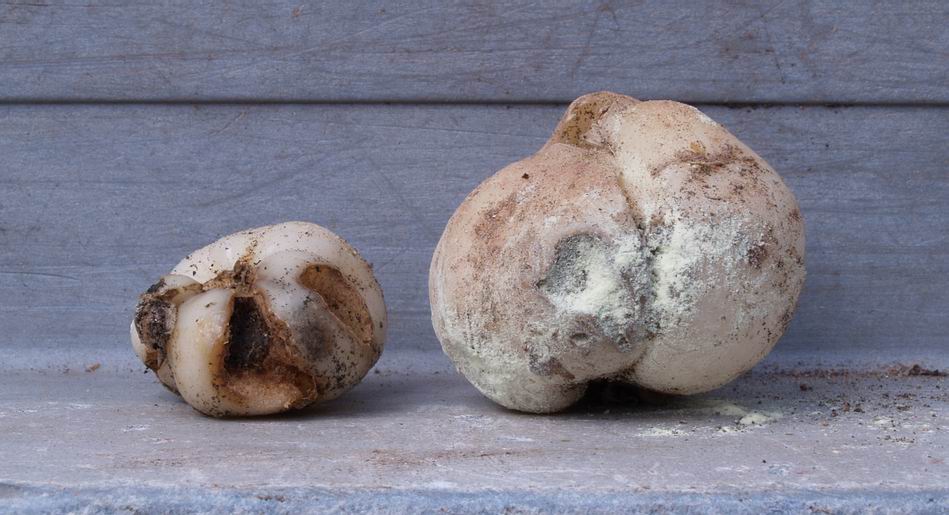
Fritillaria bulbs with rot
It is quite common to find a bit of rot on Fritillaria bulbs when you are repotting - this type of rot on the new bulb is mostly caused by excess moisture as the bulbs are going dormant and in our cool and changeable climate it is very difficult to avoid. However the rot often stops as the compost dries out and all that I do is to carefully scrape away any wet rot still remaining and then dust the bulbs with sulphur.
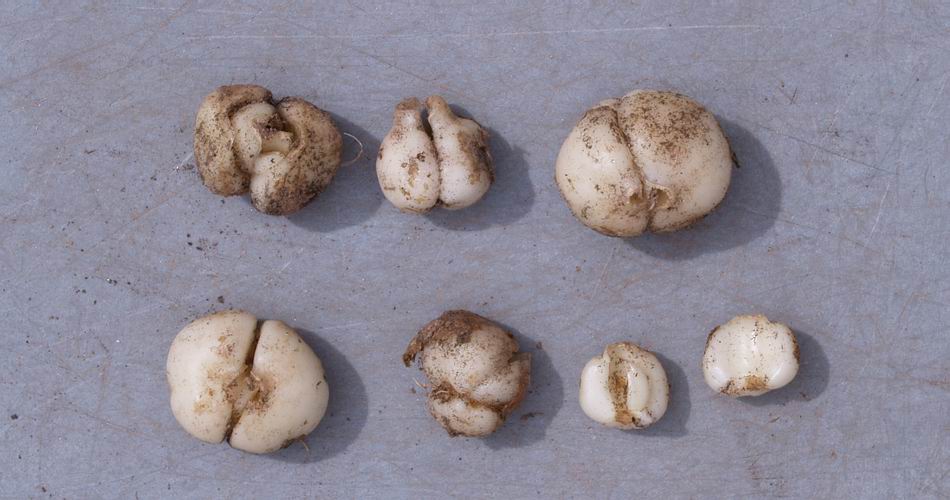
Healthy Fritillaria bulbs
It is really too early to be re-potting but with the number of pots we have and my impatience to see how they have grown I often start early. Ideally I would like to repot all my bulbs on the last day of August and water them on the first of September but we do not live in an ideal world. Here is a pot of nice healthy fritillaria bulbs - the bulb on the bottom right has been split into two and you ca see the flower shoot on the left hand section that will produce the flower next spring. Now that the scale with dominant bud has been separated, buds will also form on the other scale, speeding up the rate of increase. This is a similar though less drastic process to the one I was forced to use on the frit chitralensis above and separating the two scales of frit bulbs is a reliable way of increasing bulbs that are reluctant to form offsets if left to their own devices.

Arisaema cilliatum with mutated spadix
Here is an interesting mutation that I found when I was photographing Arisaema cilliatum - instead of a single club shape, two conjoined spadix have formed. The rest of the plant looks normal so this is most likely the result of a slight mutation of the cells at an early stage - various environmental factors can cause these effects and it is unlikely to be repeated next year.
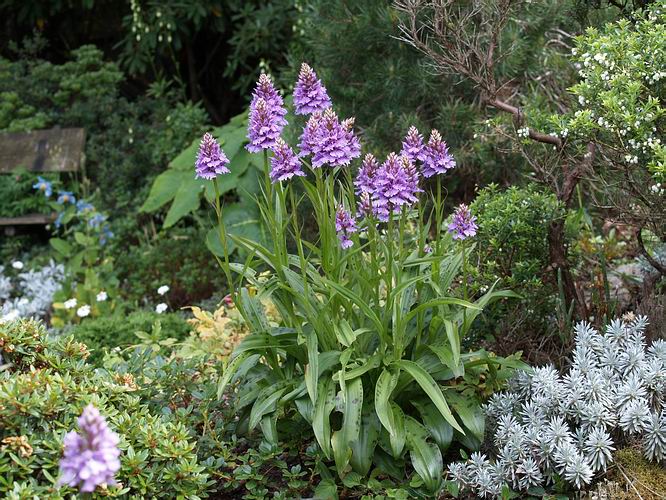
Dactylorhiza seedlings
A number of years ago we all suffered varying degrees of fungal attacks on our Dactylorhzia orchids and in the worst cases people lost their entire stock. I made efforts to clean our infected plants up by removing the young bulbs at an early stage before the infection had passed to them and with many plants that worked but all the best clumps we now have are all spontaneous seedlings from around our garden. These seedlings occur mostly in troughs and undisturbed pots and eventually I remove them and plant them in the garden where they have all the vigour and health you expect from a young plant.

Lilium mackliniae flower
Among my all time favourite lilies is Lilium mackliniae and we are very lucky that it enjoys the cool humus-rich growing conditions in our garden.

Lilium mackliniae
The flowers vary in the intensity of colour with some being almost white with just a hint of pink while others can be a strong pink all over.

Nomocharis
Also in flower now are the Nomocharis : so beautiful but also so delicate. I raise both the Nomocharis and Lilium mackliniae from seed most years - they can be grown from seed to flowering sized in three years but they are not always very long lived.
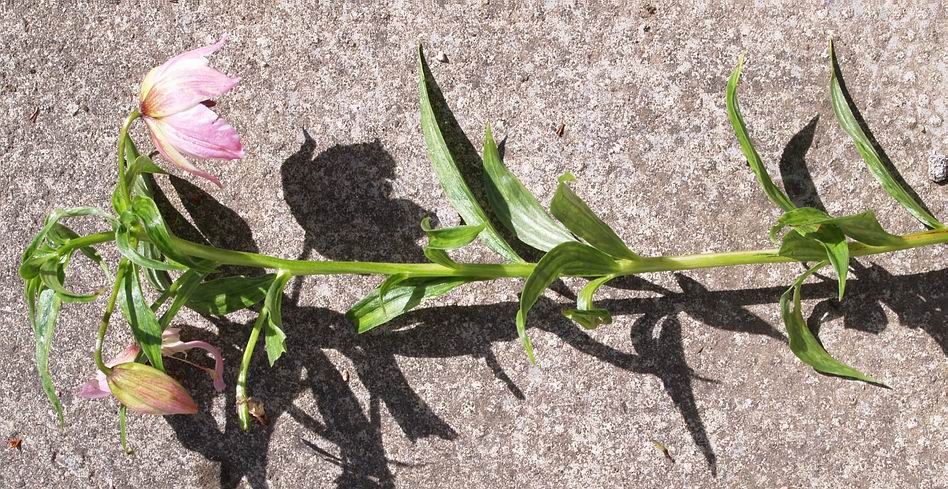
Nomocharis with virus
The main reason we lose these lovely flowers is to the dreaded viruses that are so prevalent in some garden plants. Many of the robust bulbs can survive and flower even though they are infected by virus and unfortunately these are all too often bulbs that appear in the mass market. While I can exercise some control over what I grow in our garden I have no control over what my neighbours grow or for that matter the local authorities who plant bulbs by the tonne in municipal plantings - so virus will always be around us in the suburban garden.

Virused Nomocharis flowers
Some of the symptoms to watch for are the streaking or blotching of the colour of the flowers.
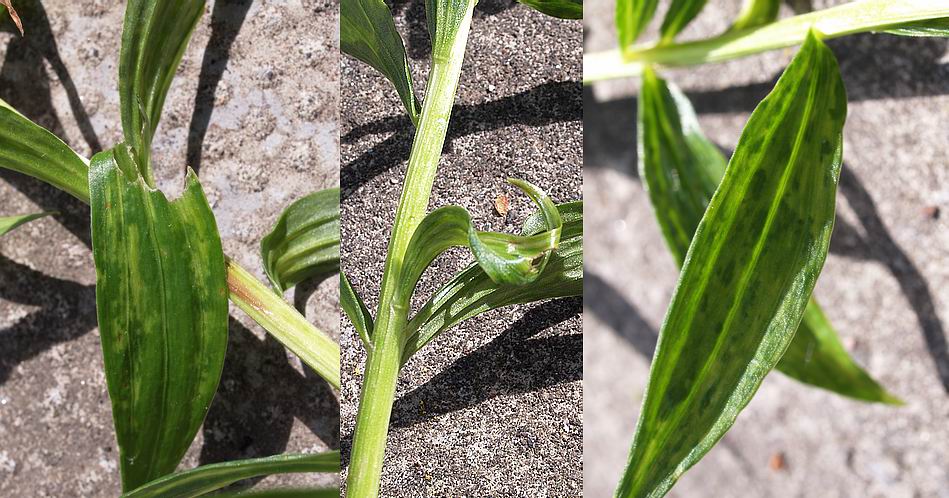
Virused Nomocharis leaves
A similar effect in the leaves, seen as stripes in narcissus and mosaics or blotches in other plants, depending on the particular virus, is a sure sign that they have a virus. Distortion of all parts including the leaves as seen in the middle above will also occur as the virus progresses through the plant
Unfortunately for these dainty members of the lily family, getting infected with a virus will cause death of the plants within a few years but I recommend that you dispose of the plants as quickly as you can once you know they are virused. Keeping them will only put your entire collection at risk and it is just not worth it. Notice also that one of the leaves on the left has been well chewed by a slug or snail - not a worry in itself but if that snail chews another plant then there is s strong possibility it will carry the virus infection with it.
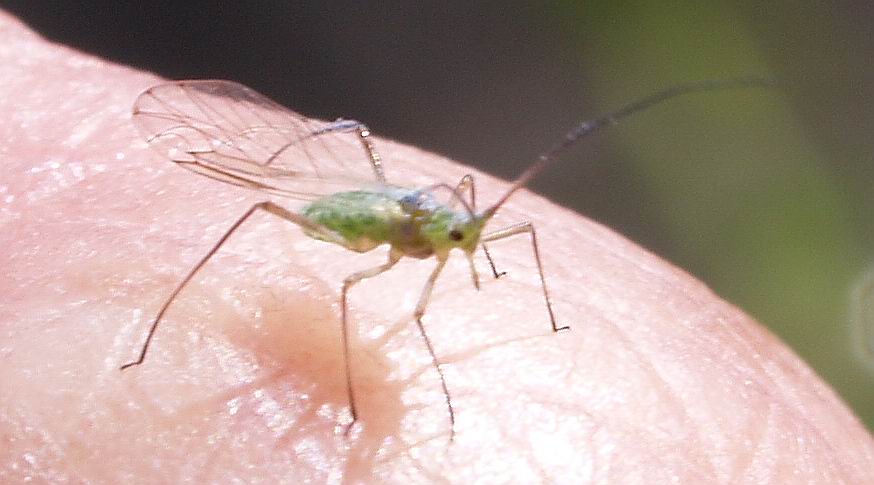
Winged aphid
The main vector for transferring viruses is the aphids and especially the winged ones which can easily move not only from plant to plant but also from garden to garden.

Nomocharis 2
Luckily it is not all doom and gloom and while I do regularly lose lilies to virus by destroying the infected ones as soon as I notice the symptoms, by keeping a regular stream of seedlings coming along, our garden is never without these delicate beauties.
^ back to the top ^
|

